Shungiku is an easy-to-grow chrysanthemum that’s not only pretty, but great in Asian cooking
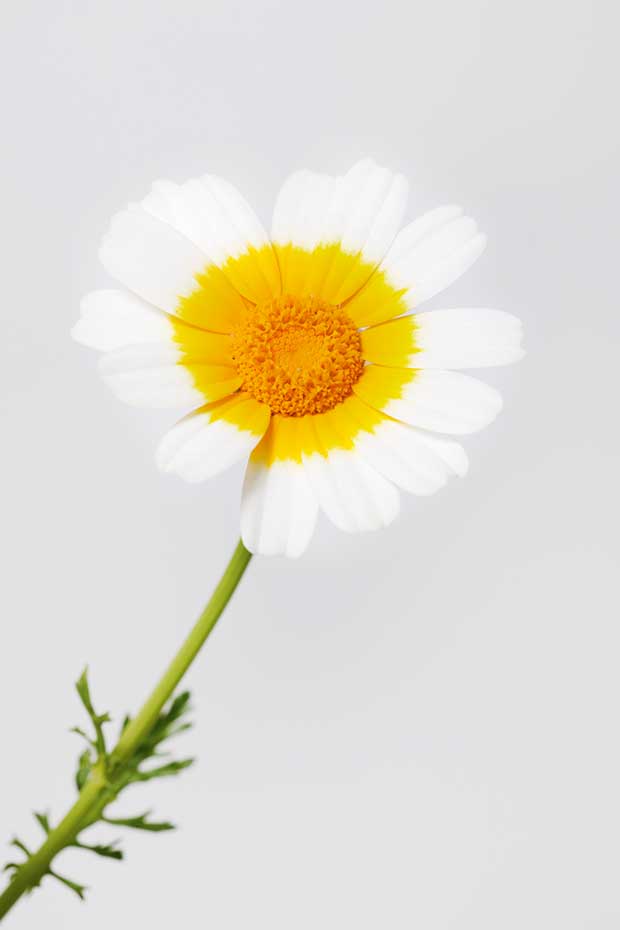
Chrysanthemums are a florist favourite, but one type makes a great dish too.
Words: Jenny Somervell
When I first spotted seed for shungiku I was intrigued but far from converted. ‘Edible’ and ‘chrysanthemum’ are not two words I would normally put together. I wasn’t sure if I wanted something like that in my stir-fry.
However, a year of trying all kinds of other Japanese greens has made us keen to be more experimental. Cooking with komatsuma (Japanese mustard greens) in several classic stir-fry dishes with shitake mushrooms, noodles, ginger and a hint of chilli never failed to take the edge off winter. Could shungiku do the same?
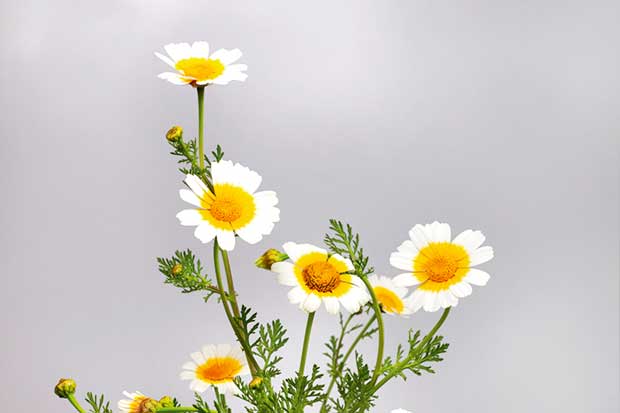
The petals are edible. You can use them fresh or dried, sprinkled over soups and salads, and as a garnish. Kikumi, a Japanese pickle, is made from the flower petals.
The flavour of shungiku (Chrysanthemum coronarium) is predictably ‘chrysanthemumy’. That is, slightly bitter, with a grassy, tangy, herbal flavour and a slightly succulent texture.
It’s a little like coriander, not everyone’s cup of tea. The flavour is mild in young leaves, becomes more pronounced with age, and goes bitter when the plant flowers.
What began as a pretty, annual hillside plant in the Mediterranean is now one of the most popular leafy vegetables in Japan. How it migrated east is a mystery, but it is now deeply embedded in Japanese cuisine.
SHUNGIKU, JAPANESE-STYLE
Shungiku leaves and stems can be steamed, blanched, lightly boiled with minimal water, stir-fried, or battered and deep-fried (tempura). They are added to stews and one-pot dishes like sukiyaki.
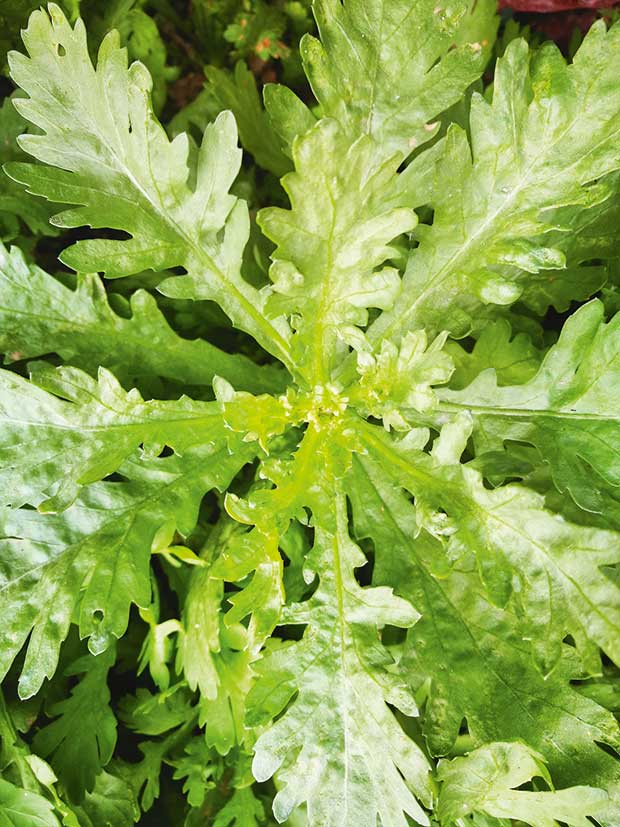
Complementary flavours are ginger, garlic, honey, rice wine, sesame seeds, tamarind, soy sauce, honey and Asian dressings.
The leaves look like the ones you’ll find at your florist in size, colour and smell. The indentation of leaves can vary from slight to deeply cut.
Plants grow to about 30cm high and may reach 60cm if left to flower.
The flowers are 4-6cm across, single, yellow-centred daisies. Petal colour varies from yellow through to white and orange, often shading from pale yellow on the outside to a deeper yellow in the centre.
WHY THIS IS A PERFECT WINTER VEGETABLE
As with other Japanese greens, the key with chrysanthemum greens is:
• growing them when it’s cool;
• combining with the right ingredients in a dish;
• not overcooking.
Shungiku is rich in vitamins A and B, contains many anti-oxidants, and more potassium than a similar serving of bananas. It is relatively hardy, tolerating light frosts in the open. In mild climates, or in unheated greenhouses, it can be cropped from late autumn until early spring.
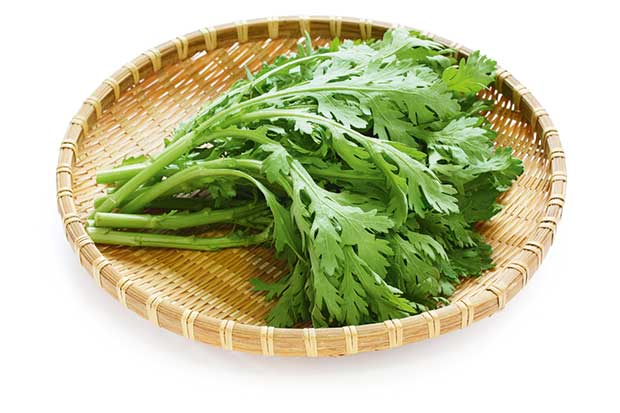
It is suitable for intercropping between slower growing and taller crops as it is quick-growing, tolerates light shade, and can be kept small by cutting. It will also grow in containers and does well on a well-lit windowsill indoors.
The bright, serrated leaves enhance the autumn garden, and they make a neat, trimmed edging. Leave some to flower for a splash or two of colour in spring.
SHUNGIKU
Other names: Chrysanthemum coronarium syn Glebionis coronaris, edible chrysanthemum, garland chrysanthemum, Japanese greens, crown daisy, chop suey greens, kiku-na
Shungiku has been traditionally classified by type, based on leaf size and serration of leaves. There are few distinct varieties.
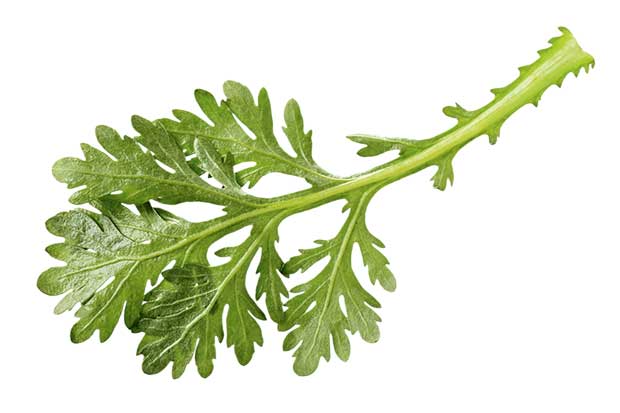
Small-leaved type: closest to the wild type, with very indented, light green, almost feathery leaves. The small, upright plants don’t branch readily, and are low yielding, with a strong-ish flavour. Will adapt to a wide climate range.
Large, broad, round or spoon-leaved type: broader, thicker, shallow-lobed, and somewhat spoon-like leaves, with a tender flavour and texture. Plants are larger, bushier, more spreading and higher yielding.
Intermediate type: the most popular type, often listed as ‘small-leaved’ type. Moderately thick and indented leaves, tend to dark green. Plants are fast-growing, bushy and branching, with a high yield, thriving in both cool and warm climates.
HOW TO GROW
Edible chrysanthemum likes similar growing conditions to mustard, rocket, komatsuna, kale and other autumn greens, and adds much-needed variety to the winter menu.
• Shungiku will grow best on fertile, moisture-retentive soil, although it is not fussy. It likes good drainage and dislikes wet feet.
• Young plants are easily suffocated by weeds, so keep weed-free and well watered. Shade in unseasonal hot weather to keep cool. Depending on the time of year, first pickings will be ready in 25-35 days.
• Above 25°C, plants tend to become bitter and may bolt so it is definitely a cool-season crop. Avoid sowing in mid-summer, as summer crops will quickly run to seed.
• Crops can be grown as cut-and-come-again seedlings in patches or beds, or as single plants in drills.
• For cut-and-come-again, sow thinly (and thin further if needed to 4cm apart) so seedlings are about 4.5cm apart. Plants can be snipped at 10-12cm high. Plants recover quickly to produce fresh new growth and several cuts can be made over a month or so.
• For single plants, depending on the variety, space 15-20cm each way. They can either be sown direct or transplanted from modules. If plants become spindly, pinch out the top 5cm to encourage branching. You can cut back quite hard to stimulate new side shoots.
• Harvest just before use as leaves wilt quickly. Plants can be harvested as one-offs (small to intermediate leaved varieties), or picking can continue for up to three months.
• As plants become tougher, individual leaves can be harvested.
• Any flower buds should be nipped out as they will cause bitter, coarse growth.
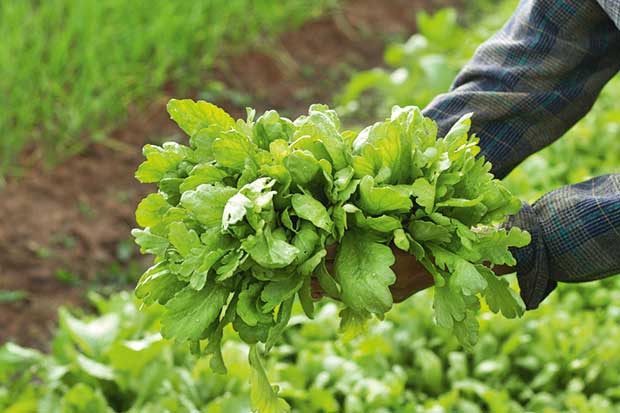
Spring sowing
Sow direct under cover in unheated greenhouses or cloches as early as possible in spring. Sow the fine seed shallow, into a well-prepared seedbed and just cover. Seedlings normally appear within 7-10 days in a moist seedbed. Outdoor sowings can start after the risk of heavy frosts.
Autumn sowing
Sow outdoors, 8-10 weeks before first frosts are expected. Late autumn sowings under cover will provide an early winter crop. In more severe winters, plants will hold for winter harvesting and sprout again in spring. In mild climates cropping can continue
all winter.
Where to find seeds:
Kings Seeds
Egmont Seeds
Johnsons Seeds
Plus: Trade Me, gardening stores
Note: may be listed as ‘chop suey greens’ on seed packets
Love this story? Subscribe now!
 This article first appeared in NZ Lifestyle Block Magazine.
This article first appeared in NZ Lifestyle Block Magazine.
